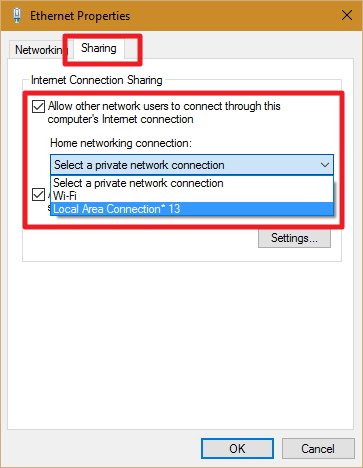
- #The microsoft hosted network adapter could not be started drivers#
- #The microsoft hosted network adapter could not be started driver#
- #The microsoft hosted network adapter could not be started software#
“On Windows 7 and later, the operating system installs a virtual device if a Hosted Network capable wireless adapter is present on the machine.
#The microsoft hosted network adapter could not be started drivers#
The good news is that Virtual WiFi functionality is going to be a requirement for WLAN drivers under the Windows 7 certification logo so expect to see it soon.Īssuming it all goes to plan, the feature will be automatically exposed. WLAN hardware vendors are required to recompile their drivers with a couple new additions.
#The microsoft hosted network adapter could not be started driver#
Surprisingly, the feature is in Windows 7 today and has been for quite some time apparently, but hasn’t been exposed due to a lack of driver support. Now you might be asking, “I’ve looked at every nook and cranny of Windows 7 RC, how come I haven’t seen this feature?”. Virtual WiFi enables this, since every client can become an access point too. In a mesh network, every client becomes a repeater, growing the network organically as more clients connect. But perhaps the scenario that is more appealing is the idea of a mesh network.

In any case where you’re connected to an existing wireless access point and want to connect to another network whether that be a separate access point or even set up an ad-hoc connection, Virtual WiFi will allow you to do just that. You might be wondering why anyone would ever need multiple WLAN adapters on the same PC, well to be honest, you don’t need but its sometimes good to have. If you got lost somewhere between the dotted lines, read on. If you like to dabble in a little hardware jargon, here’s an obligatory architecture diagram which explains how Virtual WiFi works in Windows 7 in much more detail. The result is an operating system none-the-wiser and acts as if you have multiple WLAN hardware adapters working independently.
#The microsoft hosted network adapter could not be started software#
The software handles the connections of each adapter to ensure every adapter has an opportunity to connect to their respective networks limited by time. Virtual WiFi, abbreviated to VWiFi, is a software layer that abstracts the wireless LAN card hardware into multiple virtual adapters. In essence, how Virtual WiFi works is very similar to how virtualization works for operating systems which most people are familiar with – the transparent sharing of limited hardware resources to many operating systems. Years after the project was seemingly abandoned, it is now uncovered Virtual WiFi technology has been baked into the Windows 7 networking foundations. Since 2002, Microsoft Research has been exploring a fascinating idea to virtualize the WiFi adapter, turning a single piece of hardware and radio into virtually (pun) unlimited adapters. WiFi is an incredible technology that has transformed how and where people used computers, however besides advancements in speed, range and security, very little has changed how we use wireless networks.


 0 kommentar(er)
0 kommentar(er)
